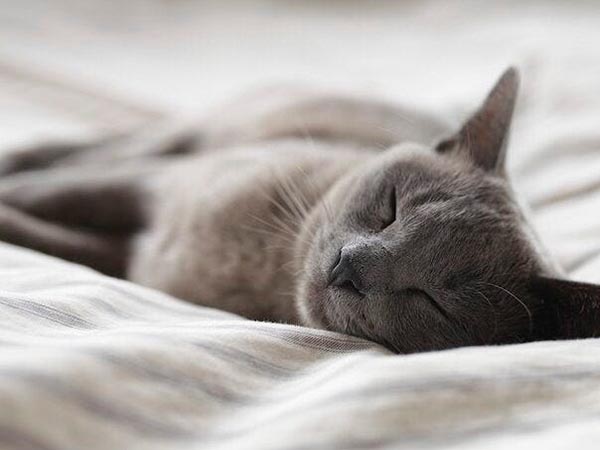What to Do When Your Pet Isn't Eating
|
Apr 17, 2024 - By the dedicated team of editors and writers at Newsletter Station.

|
As a pet owner, it can be a cause for concern when your furry friend refuses to eat. Loss of appetite in pets is a common issue and can be attributed to various reasons, ranging from minor issues to more severe health concerns.
In this blog, we will explore some common reasons behind your pet's decreased appetite and guide what to do when your pet isn't eating.
- Rule Out Health Issues
When your pet stops eating, the first step is to consider its overall health. Some underlying medical conditions can cause a loss of appetite, such as dental problems, gastrointestinal issues, infections, or pain. Suppose your pet's refusal to eat persists for more than a day or is accompanied by other concerning symptoms like vomiting, diarrhea, lethargy, or weight loss. In that case, it's crucial to consult your veterinarian promptly.
- Check for Dietary Preferences
Sometimes, a pet's reluctance to eat may be due to a change in their food preferences. Pets can be picky eaters, and if you've recently switched their diet or introduced new treats, they may need time to adjust. Gradually transition to new foods to help them adapt. Also, consider the temperature of their food; some pets prefer their meals warmed slightly.
- Maintain a Regular Feeding Schedule
Establishing a consistent feeding routine can be beneficial for pets. Offer meals simultaneously each day, and avoid always leaving food out. When your pet knows when to expect food, they are more likely to be hungry during their designated meal times.
- Avoid Overfeeding and Treats
While ensuring your pet gets adequate nutrition is important, overfeeding can lead to losing appetite. Be mindful of portion sizes and follow the recommended feeding guidelines for your pet's age, size, and breed. Additionally, limit treats and snacks between meals to prevent them from using less nutritious options.
- Create a Comfortable Environment
A comfortable and stress-free environment is crucial for your pet's appetite. Ensure they have a quiet and safe place to eat, away from loud noises or disturbances. Some pets may become anxious when eating, so ensuring a calm atmosphere can encourage them to eat more regularly.
- Try Different Foods and Feeding Methods
If your pet continues resisting their usual food, try different flavors or brands. You can also experiment with different feeding methods, such as puzzle feeders or food-dispensing toys, to make mealtime more engaging and enjoyable for your pet.
- Monitor Your Pet's Behavior
Pay attention to your pet's behavior and demeanor. Changes in behavior, such as excessive drooling, pawing at the mouth, or reluctance to open their mouth, could indicate dental issues or pain. If you notice any unusual behavior, consult your veterinarian for a thorough examination.
When your pet isn't eating, it's essential to investigate the cause and take appropriate action. While minor fluctuations in appetite are normal, prolonged loss of appetite should not be ignored. Consult with your veterinarian if your pet's eating habits don't improve or if you notice any concerning symptoms.
By addressing the issue promptly and considering the tips mentioned in this blog, you can help ensure your beloved companion gets back to enjoying their meals and maintaining good health. Remember, a healthy diet and a loving, stress-free environment are critical to a happy and well-nourished pet.
Unlock the Power of Email Marketing
Harness the potential of email marketing with Newsletter Station. Reach your target audience, drive conversions, and achieve your business goals.
|
More Blogs
| May 1, 2024 |
Tips for Removing a Tick from Your Pet
|
| Apr 24, 2024 |
How to Know When It Is Too Hot to Walk Your Dog
|
| Apr 17, 2024 |
What to Do When Your Pet Isn't Eating
|
| Apr 10, 2024 |
What Causes Bad Breath in Dogs and Cats?
|
| Apr 3, 2024 |
What Causes Cysts in Dogs: Understanding Canine Cyst Formation
|
| Mar 26, 2024 |
Toxic Plants for Cats: Protecting Your Feline Friends
|
| Mar 20, 2024 |
Reasons Your Dog Is Licking Its Paws
|
| Mar 13, 2024 |
Ways to Deal with Dog Separation Anxiety
|
| Mar 6, 2024 |
Identifying Food Allergies in Dogs and Cats
|
| Feb 28, 2024 |
Spotting the Early Signs of Dementia in Your Aging Dog
|
| Feb 21, 2024 |
How Safe is Pet Hair Dye?
|
| Feb 14, 2024 |
Why Enrichment is Critical for a Cat or Dog
|
|
|
|